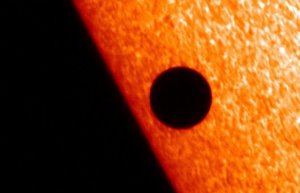Perfect conditions on Titan, Saturn's moon, allowed researchers to take a peek at t he newly discovered "salt flats."
The moon boasts liquid methane and ethane seas, and the researchers were able to snap some photos thanks to the Sun shining over the north pole and spot-on trajectories from an orbiting spacecraft.
"The images reveal new clues about how the lakes formed and about Titan's Earth-like "hydrologic" cycle, which involves hydrocarbons rather than water," a NASA news release reported.
The vast majority of Titan's lakes are located by its north pole. Researchers have been using powerful radar that can see through Titan's thick-cloudy atmosphere, but the images it delivered were extremely vague.
At the time of several flybys by the Cassini spacecraft a thick haze that usually hung out over the north pole had dissipated and sunlight was shining on the often dark north pole.
The images Cassini captured are all mosaics made from infrared light-based data gathered by the space craft. These images suggest areas of Titan's oceans and lakes have evaporated, leaving behind terrain comparable to Earth's salt flats. Since the evaporated materials were composed of organic particles. the flats appear orange against a green background representative of the moon's water ice cover.
"The view from Cassini's visual and infrared mapping spectrometer gives us a holistic view of an area that we'd only seen in bits and pieces before and at a lower resolution," Jason Barnes, a participating scientist for the instrument at the University of Idaho, Moscow, said. "It turns out that Titan's north pole is even more interesting than we thought, with a complex interplay of liquids in lakes and seas and deposits left from the evaporation of past lakes and seas."
In the image, there is a light area that is clearly distinct from the rest of the terrain, this is believed to be the salt flats.
Titan's lakes formed in a variety of shapes. There are a number of theories on how they formed including a volcano eruption and melting bedrock.
"Ever since the lakes and seas were discovered, we've been wondering why they're concentrated at high northern latitudes," Elizabeth (Zibi) Turtle, a Cassini imaging team associate based at the Johns Hopkins Applied Physics Laboratory, said. "So, seeing that there's something special about the surface in this region is a big clue to help narrow down the possible explanations."
The team hopes these images will bring them a step closer to finding the answer.
© 2025 HNGN, All rights reserved. Do not reproduce without permission.








